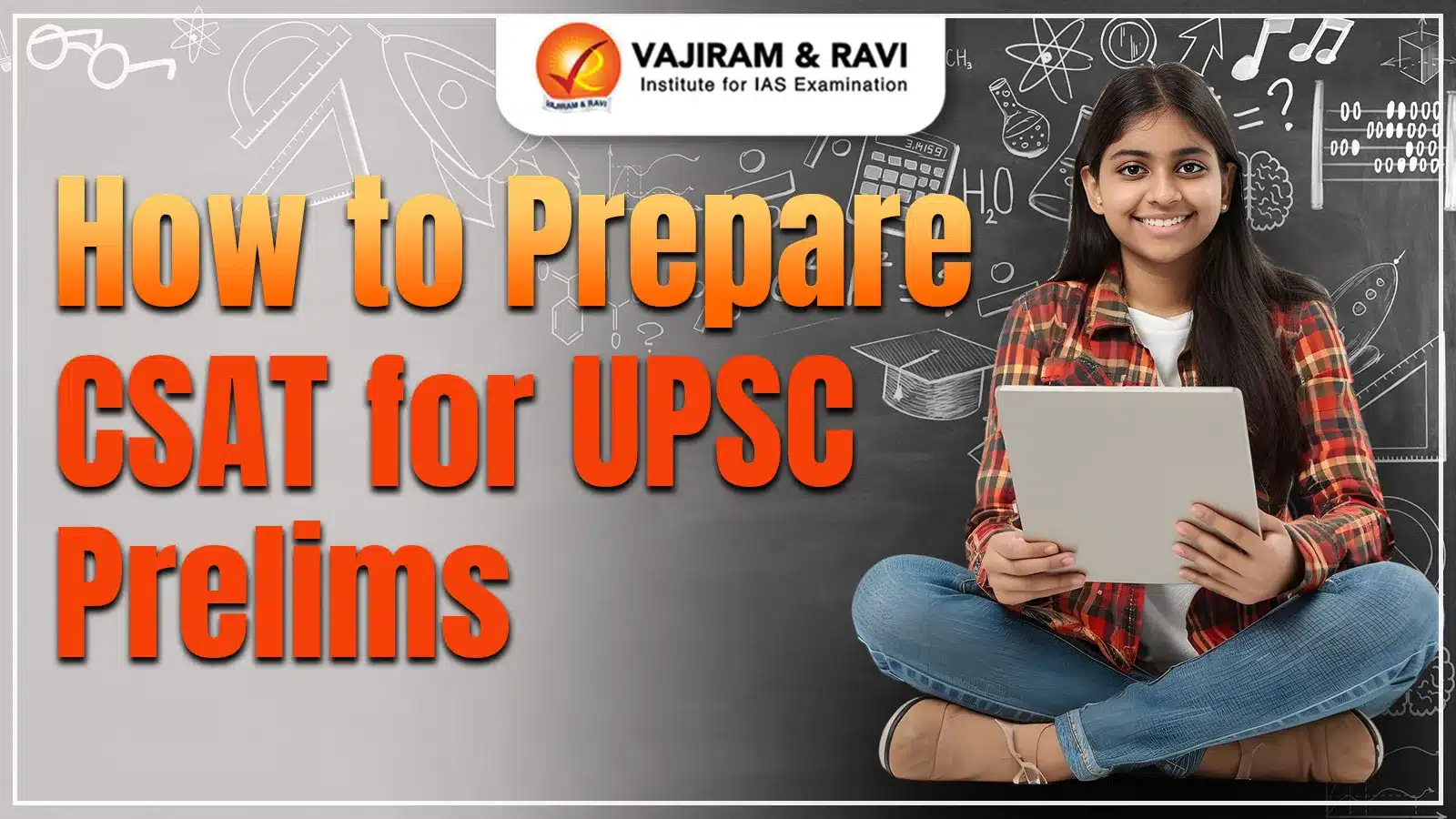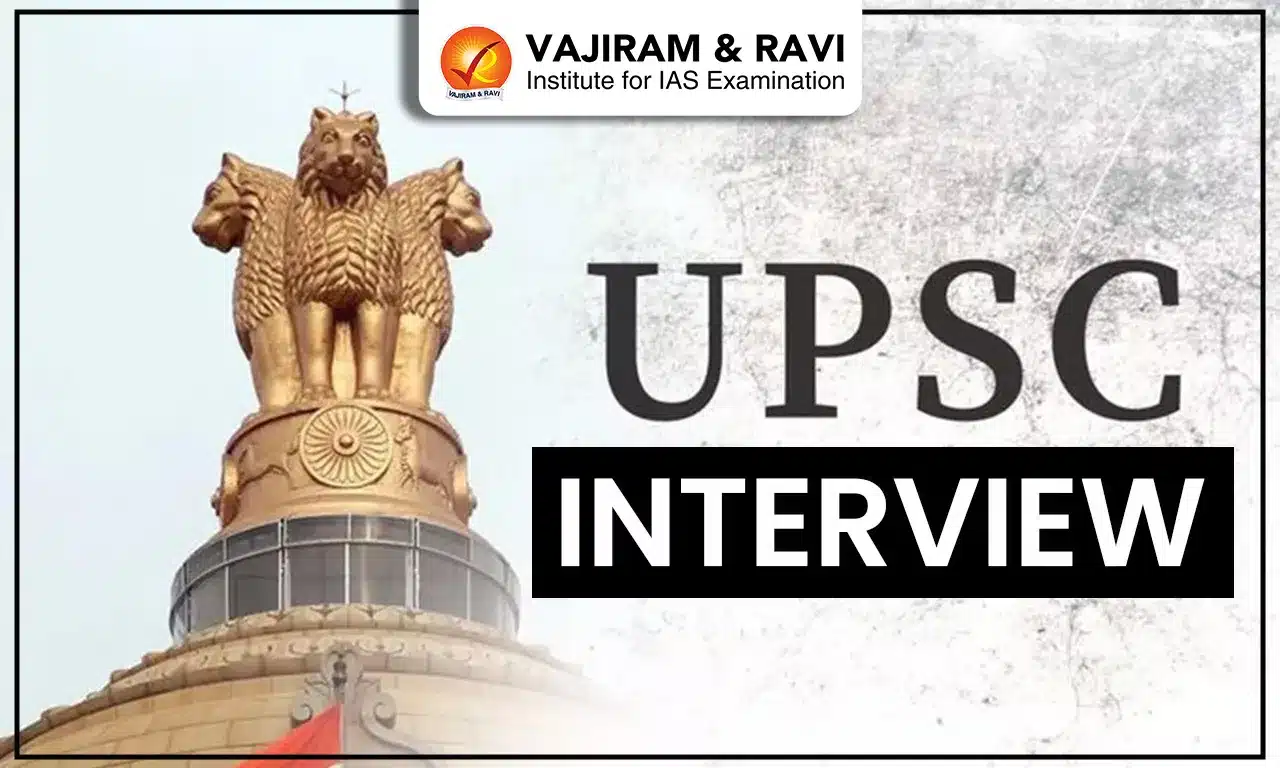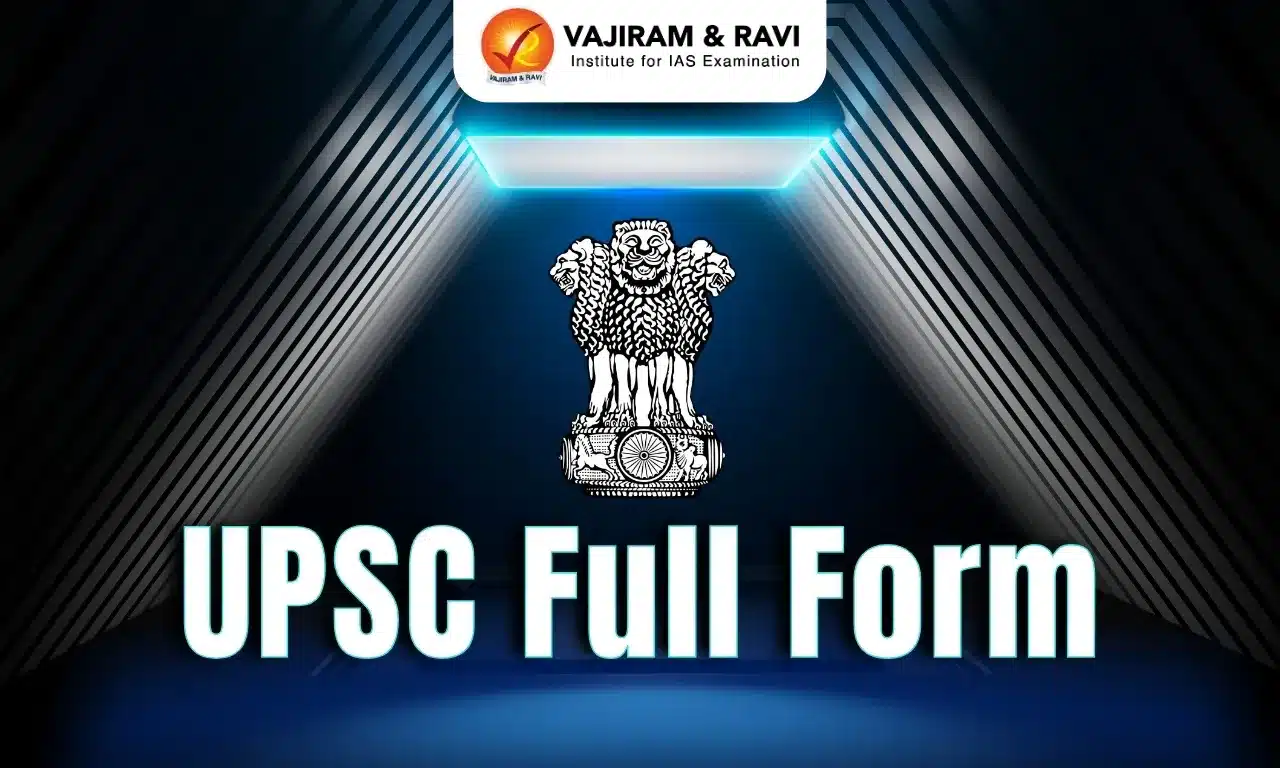The question “How to prepare for UPSC CSAT” is crucial for all candidates aiming to take the UPSC Prelims 2024. CSAT, or Civil Service Aptitude Test, is the qualifying paper in the UPSC Prelims exam, also known as General Studies-2. It can be challenging as it tests candidates' aptitude, decision-making skills, logical reasoning, reading and analytical abilities.
CSAT is a qualifying paper, and its preparation requires a different approach compared to the General Studies Paper. In this blog, you will find a subject-wise strategy for preparing for CSAT UPSC, along with a list of recommended books.
5 Tips to Prepare CSAT for UPSC
CSAT tests your logical reasoning, analytical ability, decision-making, and problem-solving skills. It is a qualifying paper, which means you only need to score 33% marks to pass it.
There are many tips and strategies that can help you prepare for CSAT effectively:
- Understand the syllabus and exam pattern: Visit the UPSC website for accurate UPSC CSAT Syllabus. The syllabus covers topics such as comprehension, interpersonal skills, general mental ability, basic numeracy, and data interpretation. The exam pattern consists of 80 questions with a negative marking of 0.83 marks for each wrong answer.
- Prepare a study schedule: Create an organised timetable and dedicate at least one hour of your preparation time for CSAT. Allocate sufficient time for each topic according to your strengths and weaknesses. Revise the topics regularly and practise mock tests.
- Read newspapers daily: Newspapers are a great source of current affairs and general knowledge. They also help you improve your vocabulary and comprehension skills. Read newspapers like The Hindu or The Indian Express daily and make notes of important facts and events.
- Solve previous year papers: Solving UPSC previous year papers will help you familiarise yourself with the type and level of questions asked in CSAT. It will also help you assess your performance and identify your mistakes.
- Join a CSAT Course or Test Series: It has been often observed how UPSC aspirants neglect preparing for CSAT Test till the last minute and eventually end up regretting their decision. Preparing for UPSC CSAT under the expert guidance of a mentor can help you become acquainted with the tips and tricks required to solve CSAT questions with ease. A UPSC CSAT Test Series will help you identify the gaps in your preparation and become more confident about your preparation.
How to Prepare for the CSAT Reasoning Section?
The CSAT Reasoning Section tests your logical and analytical abilities. To prepare for this section, you need to follow some tips and strategies:
- Understand the UPSC CSAT Reasoning Syllabus: The syllabus covers topics such as data interpretation, data sufficiency, analytical reasoning, logical reasoning, syllogism, logical connectives, assumption/inference/conclusion, blood relations, direction, non-verbal reasoning, Venn diagrams, missing numbers, series completion, coding-decoding, seating arrangements, etc.
- Collect Study Materials: You need to have good CSAT books that cover the reasoning syllabus and provide ample practice questions and mock tests. Some of the recommended books are: A Modern Approach to Verbal and Non-Verbal Reasoning by R.S. Aggarwal, Analytical Reasoning by M.K. Pandey, and CSAT Paper 2 by Arihant Experts.
- Take PYQs to Evaluate Yourself: You need to solve previous year questions (PYQs) of the CSAT reasoning section to understand the level of difficulty, the type of questions, and the weightage of topics. You can also analyse your strengths and weaknesses and improve your accuracy and speed.
- Learn the Basics: Learn the basic concepts and rules of each topic in the CSAT reasoning syllabus. You should also learn the common terms and symbols used in reasoning questions and how to apply them.
- Learn Tricks and Shortcuts: You need to learn some tricks and shortcuts to solve reasoning questions faster and save time. For example, you can use Venn diagrams to solve syllogism questions, elimination methods to solve data sufficiency questions, and diagrams to solve direction and blood relation questions.
- Focus on Important Topics Only: Focus on the topics that have high weightage and frequency in the CSAT reasoning section. Some of the important topics are data interpretation, analytical reasoning, logical reasoning, syllogism, and coding-decoding.
- Practice Regularly: Practise reasoning questions regularly to improve your skills and confidence. You should also revise the topics and concepts periodically and clear your doubts.
- Take Practice Tests: You should take the CSAT Test Series to assess your preparation level and performance. You should also check your solutions and learn from your mistakes. You should also try to improve your time management and accuracy.
How to Prepare Quantitative Aptitude for CSAT?
Quantitative Aptitude is one of the topics in the CSAT syllabus, which tests your numerical and logical skills. It covers topics such as number systems, time and work, ratio and proportion, fractions, quadratic equations, averages, percentages, speed, time and distance, profit, loss and discount, geometry, mixtures and alligations, permutation and combination, interest (simple and compound), sets and functions, mensuration (volume, surface area and solid figures), probability.
To prepare for Quantitative Aptitude for CSAT, you need to follow some tips and strategies:
- Practise basic Maths from NCERT books for grades 8th to 10th, focusing on arithmetic and number ordering questions.
- Solve Maths questions from previous UPSC CSAT question papers to understand the difficulty level and question patterns.
- Develop proficiency in basic multiplication and division charts up to 502 and square and cube root tables up to 302 for swift calculations.
- Learn the formulas and theorems for each topic and memorise them well.
- Simplify the questions by breaking them into a stepwise process and then attempting them carefully.
- Manage your time smartly during CSAT preparation. Allocate sufficient time for each topic according to your strengths and weaknesses. Revise the topics regularly and practise mock tests.
Strategy to Prepare Reading Comprehension Section for UPSC CSAT
The Reading Comprehension Section is a part of the UPSC CSAT that tests your ability to understand and analyse various types of texts. To prepare for this section, you need to follow some strategies and tips:
- Improve your vocabulary: Knowing what the words you are reading mean, can improve your ability to comprehend the meaning of the text. You can improve your vocabulary by reading a variety of materials, learning new words from context, using a dictionary or a thesaurus, and reviewing them regularly.
- Come up with questions about the text you are reading: Before you start reading, try to generate some questions that you want to answer from the text. This will help you focus your attention and activate your prior knowledge. You can also use these questions as clues to find the answers in the text.
- Use context clues: Sometimes, you may not know the meaning of a word or phrase from the word itself. In such cases, you can use context clues to infer its meaning from the surrounding sentences or paragraphs. Context clues can be synonyms, antonyms, examples, explanations, comparisons, contrasts, etc.
- Look for the main idea: The main idea is the central point or message of a text. It is usually stated in one sentence at the beginning or end of a paragraph. You should look for this sentence and try to understand it before moving on to other details. The main idea will help you answer questions that require synthesis or evaluation of information.
- Break up the reading into smaller sections: Reading long texts can be challenging and boring if you do not take breaks in between. You should break up your reading into smaller sections based on topics, themes, subheadings, etc. This will help you maintain your interest and concentration while reading.
- Pace yourself: Reading too fast or too slow can affect your comprehension and retention of information. You should pace yourself according to your level of difficulty and familiarity with the topic. You should also avoid subvocalization (saying words in your head) and regressions (going back to previous words) while reading.
FAQs on CSAT Preparation for UPSC
Which books should I refer to for CSAT Preparation?
Some of the best books for CSAT preparation are:
- CSAT Paper 2 Manual by TMH (Tata McGraw Hill)
- Analytical Reasoning by M.K. Pandey
- Cracking the CSAT by Arihant Publications
- The Mantra of CSAT Paper II by Gautam Puri
Can I prepare for CSAT without coaching?
Preparing for the Civil Services Aptitude Test (CSAT) without coaching is challenging but possible. Utilise online resources, self-preparation books, and study platforms. Follow these steps:
- Know the Syllabus and Exam Pattern: Check UPSC's website for accurate details.
- Create a Study Schedule: Organise a timetable covering all topics.
- Use Quality Study Material: Refer to standard books and online resources.
- Practice Regularly: Solve previous papers, take mock tests, and work on sample papers.
- Manage Time Effectively: Practise timed tests to improve efficiency.
- Enhance Reading Skills: Read daily for better comprehension.
- Review and Revise: Regularly revisit covered topics for reinforcement.
- Prioritise Health and Stress Management: Maintain a balanced lifestyle.
| Other Related Posts of UPSC 2025 | |
Last updated on December, 2025
→ Check out the latest UPSC Syllabus 2026 here.
→ Join Vajiram & Ravi’s Interview Guidance Programme for expert help to crack your final UPSC stage.
→ UPSC Mains Result 2025 is now out.
→ UPSC Notification 2026 is scheduled to be released on January 14, 2026.
→ UPSC Calendar 2026 is released on 15th May, 2025.
→ The UPSC Vacancy 2025 were released 1129, out of which 979 were for UPSC CSE and remaining 150 are for UPSC IFoS.
→ UPSC Prelims 2026 will be conducted on 24th May, 2026 & UPSC Mains 2026 will be conducted on 21st August 2026.
→ The UPSC Selection Process is of 3 stages-Prelims, Mains and Interview.
→ UPSC Result 2024 is released with latest UPSC Marksheet 2024. Check Now!
→ UPSC Prelims Result 2025 is out now for the CSE held on 25 May 2025.
→ UPSC Toppers List 2024 is released now. Shakti Dubey is UPSC AIR 1 2024 Topper.
→ UPSC Prelims Question Paper 2025 and Unofficial Prelims Answer Key 2025 are available now.
→ UPSC Mains Question Paper 2025 is out for Essay, GS 1, 2, 3 & GS 4.
→ UPSC Mains Indian Language Question Paper 2025 is now out.
→ UPSC Mains Optional Question Paper 2025 is now out.
→ Also check Best IAS Coaching in Delhi

















